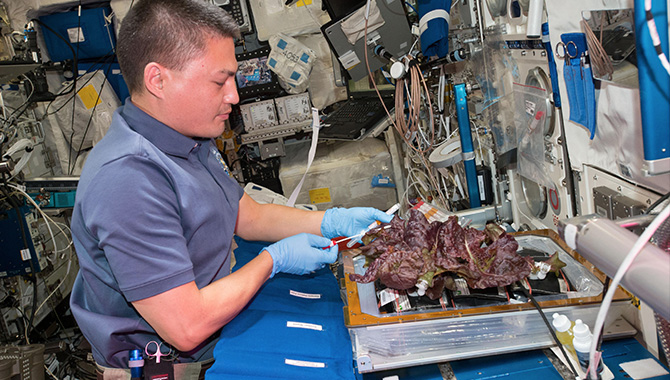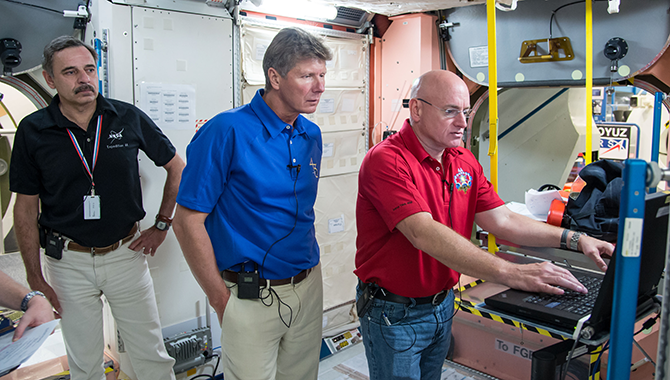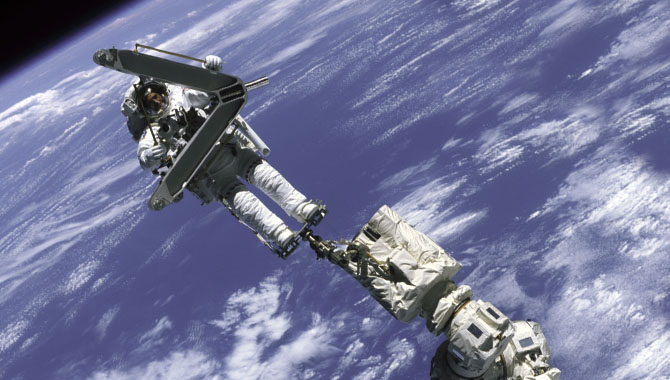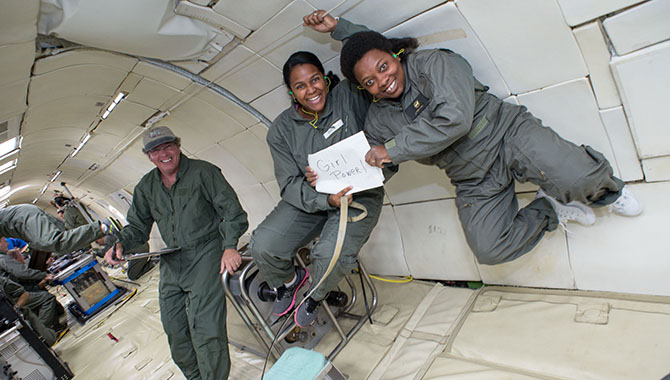
Onboard the International Space Station (ISS), NASA astronaut Kjell Lindgren harvests lettuce grown during the station-based Veg-01 experiment.
Credit: NASA
In preparation for crewed missions to deep space, NASA is developing critical technologies, addressing human health risks—and crafting the perfect meal.
The first manned mission to go beyond low Earth orbit (LEO) in the Orion space capsule is scheduled for 2021. That flight, Exploration Mission 2 (EM-2), is expected to last 10 to 14 days. The missions that follow—to the proving grounds around the moon and, eventually, to Mars—will be even longer. A mission to and from the red planet, for example, could take more than two years. Everything the crew needs to survive during the journey, including food, will have to be carried with them in the spacecraft. As a result, NASA food scientists are working to develop nutritionally sound and satisfying meals that are as small as possible to fit in the limited space on board.
One proposed solution is the meal replacement bar. Just as people appreciate the convenience of energy bars for on-the-go meals on Earth, astronauts on deep space missions could benefit from the low mass/high nutrient balance of a food bar, which would take up less space than the rehydrated meals typically consumed by astronauts on the International Space Station (ISS). The crew wouldn’t be expected to eat a food bar at each meal, but replacing a larger breakfast with one bar would go far to maximize space efficiencies in the crew module.
No commercially available energy bar meets the exacting nutritional requirements for astronauts, so scientists in the Space Food Systems Laboratory at Johnson Space Center (JSC) are in the process of developing several unique options. These meal bars range from 700 to 800 calories and are available in different flavors, including banana nut, orange cranberry, ginger vanilla, and barbeque nut.
“We have some human studies going on that will tell us whether or not people could eat bars every day, or if they need to each them every five days, or every seven days—or they don’t like bars at all,” said Takiyah Sirmons, a food scientist at JSC, during a video discussion with Orion engineer Jessica Vos.
Beyond the question of nutrition, the taste and texture of the bars must be pleasant, which is crucial not only for physical health but for morale as well. For their other meals, astronauts on Orion would have a selection of larger, heated options, similar to the meals available to crew on the ISS.
Another potential food source for deep space missions is a bioregenerative system that would allow astronauts to grow their own plant foods in microgravity environments. Experiments involving the VEGGIE unit, a plant growth system developed by Orbital Technologies Corp (ORBITEC) through the Small Business Innovative Research (SBIR) program, have been conducted on the ISS since 2014. The low-cost, collapsible system uses red, green, and blue LED lights to stimulate plant growth on single-use “plant pillows.” Each pillow, which contains a growth medium plus fertilizer and calcined clay, is low in mass, modular, and requires little maintenance.
In the first VEGGIE experiment on the ISS, Veg-01, the crew grew “Outredgeous” red romaine lettuce plants. The hardware validation test confirmed the potential to grow plants in the VEGGIE unit in microgravity and revealed very low microbial levels on the plants, which is important for astronaut health. A newer experiment, Veg-03, is currently ongoing to further validate the proof of concept for the VEGGIE system and plant pillows. The experiment, which features a different test crop called “Tokyo Bekana” cabbage, is also intended to refine water requirements for plant growth on orbit.
Paul Zamprelli of ORBITEC spoke with NASA commentator Lori Meggs about the astronauts’ response to the lettuce grown in the VEGGIE unit on station. “Oh, they loved it,” he said. “It was a lot of fun for them to tend to the garden, tend to the planets. It turned out very well.”
For astronauts, bioregenerative plant growth systems may be particularly useful while on Mars. In addition to providing a source of fresh food for physical well-being, cultivating plants may convey psychological benefits, similar to the way recreational gardening does on Earth. Eventually, plant growth systems may have applications on Earth as well to enhance growth and improve biomass production.
View a video about the VEGGIE unit and Veg experiments on the ISS.









